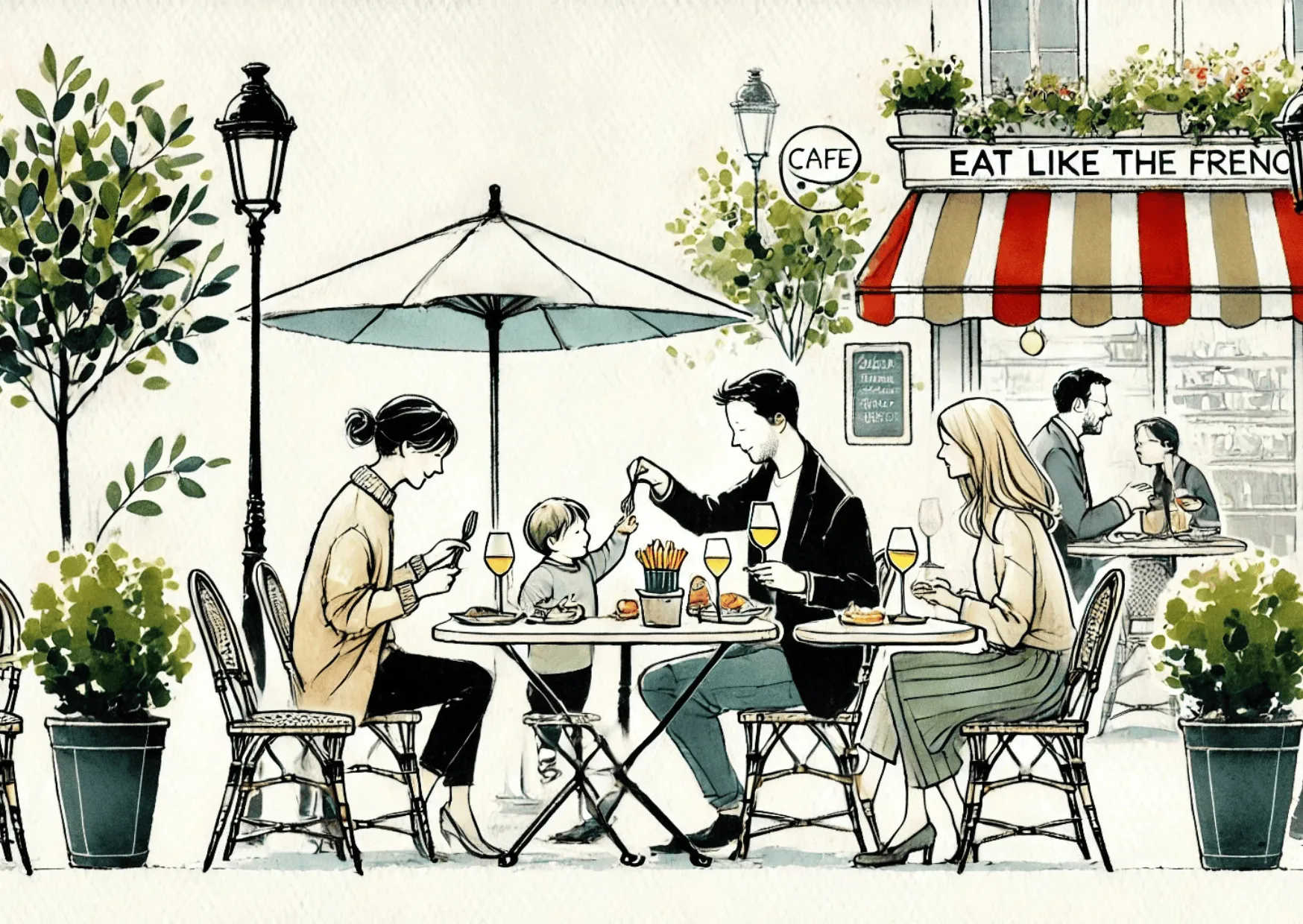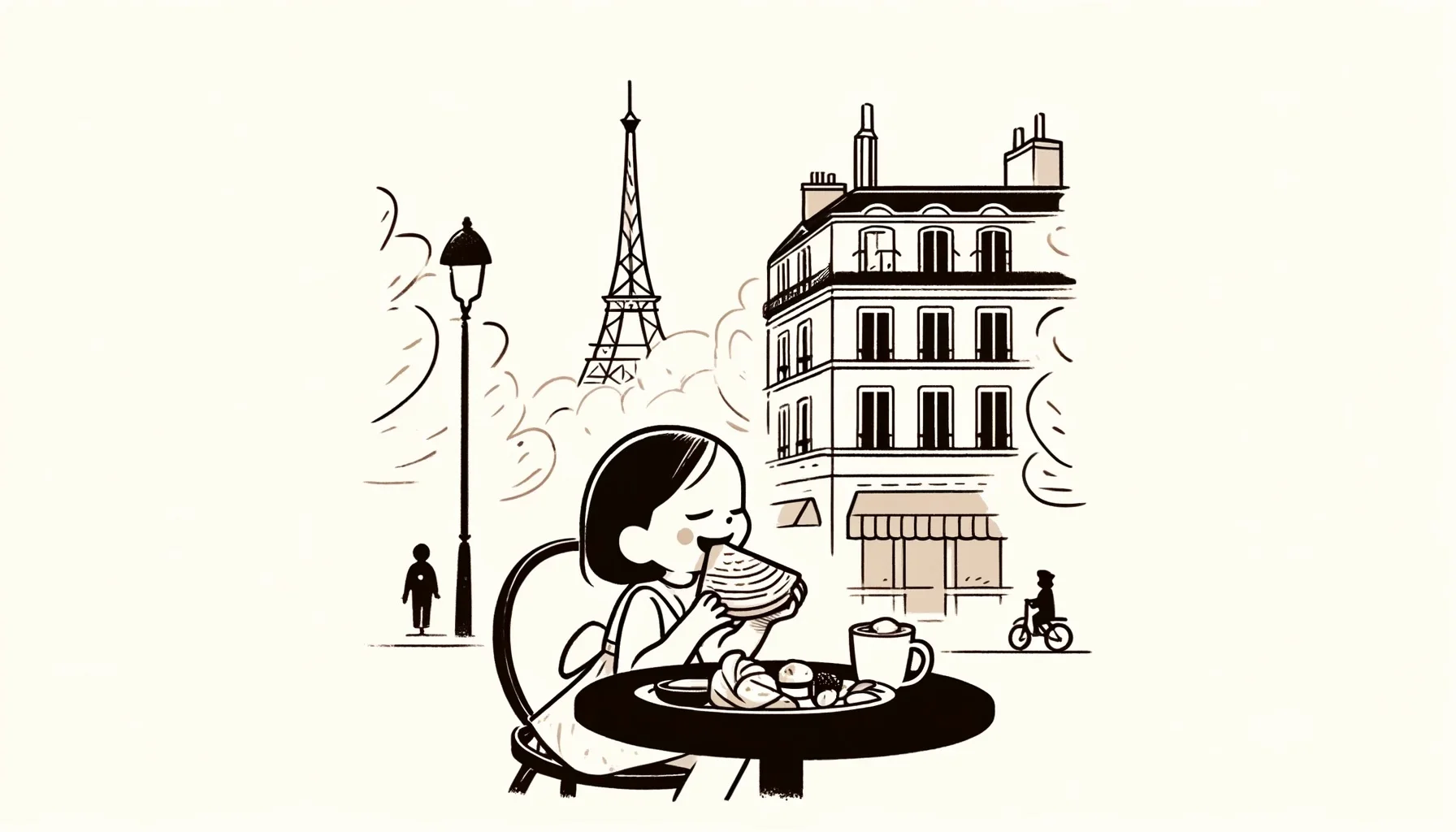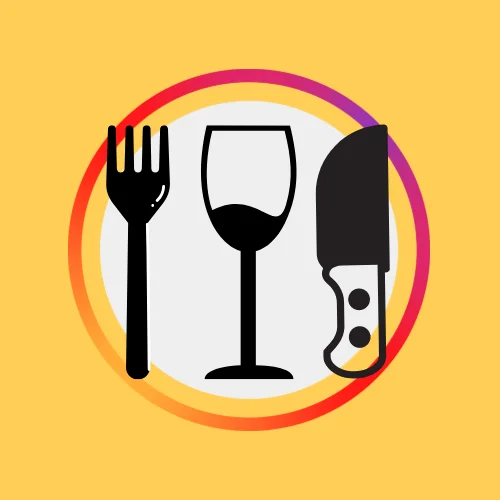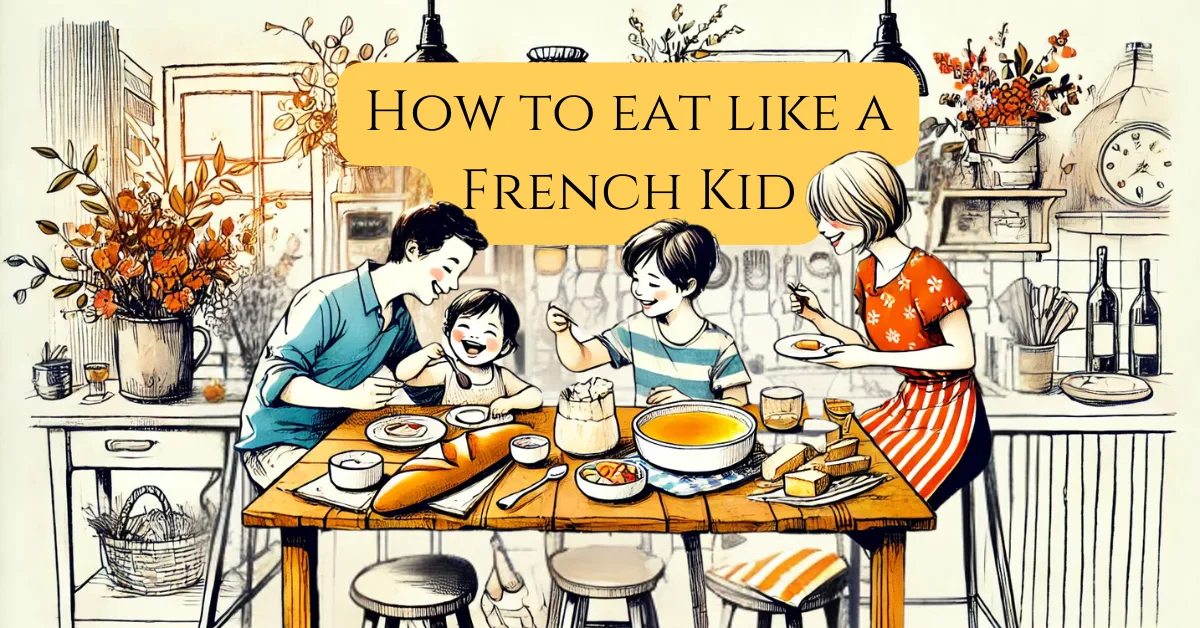Paris, with its world-renowned cuisine, is a paradise for foodie parents—but let’s be honest, traveling with kids isn’t easy. Every foodie parent knows that French children are raised to eat with impeccable manners and surprisingly adventurous palates. If you’re curious about what French kids eat—and how to help your own children explore food with that same curiosity—this guide is for you. Whether you’re planning a trip or just want to bring a little French flavour to your family table, here’s how to help your kids eat like a local.
From a young age, French kids are taught that mealtime is sacred—and their habits reflect it. My own daughter often surprises me with her mini-Parisienne tendencies. I knew she was truly Frenchified when, at just three years old, I served her a hot dog. She frowned and said, “But Daddy, you haven’t cut it up.” I told her to eat it with her fingers. She shot back, “No Daddy, we don’t eat with our fingers at the table.”
That level of discipline and mindfulness around food is core to how children in France eat—and it’s something every visiting family can learn from. Authors like Pamela Druckerman and Karen Le Billon have documented how French kids develop food sophistication early on. In Bringing Up Bébé, Druckerman describes children sitting through long meals without fuss. In French Kids Eat Everything, Le Billon shows how French families turn daily meals into sensory learning adventures.
And if you’re curious to dive deeper into real French food culture, our Family-Friendly Private Food Tour is a great way to introduce your children to the magic of Parisian cuisine.
Table of Contents – A French Kids Menu

French Mealtimes: What a Day of Eating Looks Like for Kids
In France, children’s eating habits follow a structured rhythm, built around proper meals—not constant snacking. This consistency helps kids develop a healthier relationship with food and a deeper appreciation for flavour and routine. Here’s what a typical day of eating looks like for children in France:
1. Breakfast (Petit Déjeuner)
The day begins with a light, simple breakfast. Most French kids have a tartine—a slice of baguette with butter and jam—or cereal with warm milk. Sweet pastries like croissants or pain au chocolat are reserved for weekends or special occasions. Sugar overload is kept in check.
2. Lunch (Déjeuner)
Lunch is the main event. In school canteens, it’s not unusual to see multi-course meals: a starter (like shredded carrot salad or cucumber vinaigrette), a main course (roast chicken or baked fish with vegetables), a portion of cheese, and fruit or a dessert. Meals are designed to be balanced, fresh, and nourishing.
3. Goûter (Afternoon Snack)
Forget mindless snacking—goûter is a sacred ritual around 4:30 PM. French kids enjoy something modest but satisfying: a piece of fruit, a pain au lait, or classic Prince biscuits. It’s not junk food—it’s a structured, intentional pause in the day.
4. Dinner (Dîner)
Dinner is lighter but still structured. Often it’s a comforting vegetable soup, a quick omelette, or a simple pasta dish with vegetables. A bit of cheese or yogurt often rounds off the meal. What matters most? The ritual of sitting at the table and eating together, slowly and mindfully.
This rhythm—light start, hearty lunch, structured goûter, gentle dinner—teaches children not only to eat well, but to eat with purpose. It’s not just nutrition—it’s culture.
Goûter: The Magical French Afternoon Snack
If you want to truly understand how French kids eat, just stand outside a bakery at 4:30 PM on a school day. You’ll witness the daily goûter pilgrimage—children flooding boulangeries, hand-in-hand with parents, grannies, or nannies, queuing up for viennoiseries. It’s a ritual as sacred as dinner, and a defining part of childhood in France.
Goûter isn’t about mindless snacking—it’s a structured moment, and it carries cultural weight. Traditionally, this mid-afternoon treat was humble: a slice of bread with butter, or for the lucky ones, a chunk of chocolate stuffed into a fresh baguette. That simple pairing—crusty, pillowy bread and a sliver of rich chocolate—is still iconic in Parisian food culture.
Today, goûter has evolved. Supermarkets dedicate entire aisles to individually wrapped snacks marketed for this sacred pause. You’ll find everything from Pitch brioches filled with chocolate to Barquettes de Lu (a sort of soft biscuit boat with jam or chocolate). Our little one’s go-to goûter picks? Definitely a Pitch or a barquette—unless we’re at home, where she might just as happily nibble on compote, cucumber sticks, or—because we’re a British-French household—yes, even a Marmite sandwich.
But whatever’s served, the point of goûter isn’t the treat itself—it’s the moment. A pause between school and dinner. A shared bite, a bit of sugar or comfort, and a chance to wind down. It’s food as rhythm, food as comfort, and food as culture—all in one delicious mouthful.

Really tho, What French Kids Eat: A Closer Look
Helping your kids eat like a French child starts with understanding just how seriously France takes food education. French school lunches aren’t just meals—they’re a cultural cornerstone. They’re planned with care, guided by national standards and shaped locally by chefs, seasonal produce calendars, and town-appointed nutritionists (diététiciennes municipales) to ensure that every bite is nourishing, balanced, and rooted in food culture.
The investment is real. In many towns, meal planning is overseen by a diététicienne municipale (municipal nutritionist) who works alongside chefs to develop rotating seasonal menus that expose children to a wide range of textures, flavours, and traditional dishes. School meals regularly include raw vegetables (crudités), slow-cooked meats, regional cheeses, and fresh fruit—far from the ultra-processed offerings seen elsewhere.
According to government data published by the French Ministry of Agriculture and Food Sovereignty, over 50% of ingredients in French school meals must now be sustainable, with at least 20% organic, as mandated by the EGalim law introduced in 2018. This includes a strong emphasis on seasonal produce, local sourcing, and reducing ultra-processed foods in school canteens. Source: Ministère de l’Agriculture – EGAlim Law Overview
But don’t let the white tablecloth reputation fool you—French kids eat simple food. It’s not all haute cuisine. Instead of chicken nuggets, think:
- Jambon-coquillettes (sliced ham with buttered elbow pasta)
- Galettes complètes (buckwheat crepes with egg, cheese, and ham)
- Cordon bleu (breaded chicken with melted cheese and ham inside)
- Gratin de légumes (baked vegetables with béchamel and cheese)
- Ratatouille with rice
- Steak haché & haricots verts (a minced beef patty and green beans—yes, from the butcher, not a drive-thru burger joint)
These dishes are straightforward, familiar, and designed for young palates—but they reflect the French belief that children deserve real food, not beige freezer bites.
As a parent, the best way to help your child eat like a French child is to create routine around meals, serve food in courses when possible, and expose them to new flavours slowly but regularly. It’s not about forcing foie gras—it’s about building trust, curiosity, and joy around food, one bite at a time.
How to Help Your Kids Eat Like a French Child
Helping kids eat better isn’t just about what’s on the plate—it’s about the people around the table. In France, there’s a deep understanding that food culture starts early, and it takes a village to raise a little eater with curiosity, confidence, and good manners.
The truth is, our children reflect our habits, our rhythms, and our relationship with food. In France, that relationship is shaped not just by parents, but by chefs, school staff, nutritionists, grannies, teachers, and neighbors. Everyone plays a role.
French public health initiatives support this communal approach. School meals are more than fuel—they’re educational tools. As mentioned earlier, they’re carefully designed with the help of chefs, seasonal menus, and municipal nutritionists. Children learn to sit down, eat together, and talk about their food—where it came from, how it tastes, what’s in it. That’s how appreciation is formed. That’s how food becomes culture, not just consumption.
So if you want your little one to eat like a French child, don’t just hand them a fork—show them what it means to share, to savour, and to be part of something bigger around the table.
A Chef’s Practical Tips for Cultivating Food Curiosity in Children
Let Them Taste Everything – Seriously, Everything
French kids don’t grow up on a diet of beige and bland. They’re introduced to bold flavours from the start—endive, roquefort, mustard vinaigrettes—and they learn to taste, not just eat. The secret? Curiosity over coercion. Let your little ones taste everything—from olives to oysters—without pressure or fuss. Some will stick, some won’t. That’s part of the joy.
And yes, let them get messy. Let them dip their fingers, slurp sauces, get breadcrumbs in their lap. Food is sensory—and learning happens best when little hands are involved. A bit of chaos at the table now? Worth it for a lifetime of adventurous eating.
Savour Slowly – Eat Like the French Do
French kids learn that food isn’t a race. Meals are events, not interruptions. Slow down, talk about flavours, take breaks between courses. You don’t need a tasting menu—just space for conversation and appreciation.
Think Like a Chef: Balanced Doesn’t Mean Boring
A proper plate in France has balance: veg, protein, carbs, flavour, colour. It’s not haute cuisine, it’s habit. Try a plat du jour for your kids—something warm, wholesome, and seasonal. It’s how young palates get trained without even knowing it.
Respect the Rhythm – Snacking Isn’t Grazing
French children aren’t constantly munching. Meals are anchored, and goûter is the only official snack. That rhythm makes meals more meaningful. Save the crisps and crackers—opt for a baguette with a bit of cheese or a drizzle of sirop de grenadine instead.
Family Meals Matter More Than You Think
Forget the TV tray dinners. In France, meals are shared, not microwaved. Sit down together. Even if it’s pasta and peas, it’s the moment that matters. Your kids will remember the laughter, not the menu.
Manners Are Part of the Meal
Teach your kids to say bonjour, merci, and pass the bread properly. It’s not about being stuffy—it’s about turning mealtimes into rituals. The sooner they learn that food is social, the better they’ll eat.

Must-Try Foods for Kids in France
When I first came to France as a kid, I was wide-eyed with curiosity and hungry to try everything new. I still remember the joy of my first crème brûlée, the satisfying crunch of a galette complète, and the sweet, foamy heaven of a chocolat liégeois. Now, watching my own daughter experience those same delights—and discover her own favourites—is a joy all over again.
So, here’s a bucket list of French treats for kids (and grown-ups). Consider it your go-to guide—or even a challenge checklist for older kids to tick off during your trip. Try them all, swap stories, and make food memories together.
- Sirop de Menthe or Grenadine – Sweet, refreshing drinks that feel like a fancy aperitif for kids.
- Prince Biscuits – A gouter staple—our little one’s fave.
- Orangina – That iconic bubbly orange soda in the stubby bottle. Très French.
- Chocolat – From Nutella-laced viennoisserie to indulgent treats from a proper chocolatier. Let them explore real chocolate, not just candy bars.
- Crêpes – Sweet or savoury, you can’t go wrong. Bonus points for one filled with chestnut purée.
- Cheeses – Start mild: Comté, Brie, fresh chèvre—kids can handle more than we think.
- Crème Brûlée & Chocolat Liégeois – Perfect intro to classic desserts. Don’t leave France without trying both.
- Anything from a Boulangerie – Eclairs and macarons win every time with little ones. A cheeky note: skip the cookie or brownie—those are rarely the best picks here.
- Escargot – For the bold ones. They’ll either love it or have a great story to tell.
- Sweets – From Fraise Tagada to Carambars, French candy has a surprising charm. Add nougat and praline to the mix too.
Whether it’s a flaky pastry on a park bench or cheese at the table, let your kids explore it all. Food here isn’t just eaten—it’s remembered.
Final Thoughts: What We Can All Learn From How French Kids Eat
“Children don’t just eat what’s on their plate—they absorb everything around the table.”
Why Eating Like a French Child is More Than Just Food
Adopting French eating habits isn’t just about getting your child to eat a few new vegetables—it’s about embracing a whole new way of living and connecting around the table. It’s about slowing down, sharing stories over meals, and teaching your kids that food is joy, not just fuel.
I was reminded of this during a visit to my younger brother’s family in Marseille. His wife, a master of French table etiquette, spent the entire lunch gently teaching their three boys (all under six) how to eat properly. Naturally, I became the subject of their lessons—especially when I cheekily helped myself to extra tomatoes straight from the serving dish without using cutlery. Even their toddler gave me a side-eye and a head shake. No mercy, even for Uncle Chef!
But that’s the magic. Kids mirror what they see—and they rise to the occasion when food is treated with respect, curiosity, and ritual. They don’t need perfection. They need role models, rhythm, and the chance to feel part of the meal, not just an afterthought.
So don’t worry if your little one still prefers pasta plain or refuses stinky cheese. It’s not about raising a perfect Parisian—it’s about helping them fall in love with food in their own way, at their own pace.
And if you want to kickstart that love affair with a little French flair, come join us on our Family-Friendly Private Food Tour—where you’ll discover not just what to eat, but how to eat, together.
Read More: Foodie Parenting in Paris
If you enjoyed this guide, here are more resources to help you eat well and travel smart with your family:
- Eating Out with Kids in Paris – Real-life tips and local restaurant picks for stress-free family dining.
- Self-Catering Survival Guide for Parents in Paris – What to pack, where to shop, and how to feed your family without losing your mind.
Bookmark them now—or better yet, share with a fellow foodie parent planning their next French adventure.
Love this? Get more real, unfiltered food stories straight to your inbox. No fluff, no spam—just damn good food writing and all for free!

From the bustling streets of Paris to the heat of a professional kitchen, my life has always revolved around food. A Brit who moved to France at 16, I trained as a chef in a Parisian palace kitchen at 18 and have spent decades cooking, eating, and living like the French.
By day, I run kitchens and events, but Eat Like The French is my side hustle—a way to share my passion for French food through writing and food tours. After a detour into tech recruitment, I returned to what I love most: cooking and storytelling—one dish, one tour, and one bite at a time.
Eating Like a French Child: Common Questions Parents Ask
Why are French children’s eating habits so admired?
French kids are often held up as the gold standard when it comes to balanced, adventurous eating. From a young age, they’re taught that meals are moments to be shared, savoured, and respected. They learn to try new foods, use proper table manners, and avoid constant snacking. Books like Bringing Up Bébé by Pamela Druckerman and French Kids Eat Everything by Karen Le Billon highlight how French families build food culture into everyday life, helping kids develop refined palates and a healthy attitude toward food.
How can I encourage my kids to try new foods like French children do?
Think of it as building flavour confidence, not enforcing rules. Offer small portions of a variety of foods and encourage tasting—no pressure, no battles. Talk about what’s on the plate. Guess flavours, describe textures, involve them in prepping meals. In France, children are taught that food is to be explored with all the senses.
What table manners do French children learn?
In France, good manners aren’t optional—they’re part of the meal. Kids are taught early to sit properly, use cutlery correctly, and wait their turn. No elbows on the table, no gulping and dashing. Saying bonjour, merci, and s’il vous plaît is as important as chewing with your mouth closed. It’s all part of the ritual.
My kids are picky eaters. Will they enjoy French food?
Absolutely. French food is more accessible than you think. Start with crêpes, buttered pasta, or mild cheeses like Comté and Brie. Build up to more adventurous flavours like escargot or ratatouille. And yes, if your kids are craving something familiar, there’s always a croissant—or a cheeky burger. It’s all about balance.
How can we keep structured mealtimes while travelling in France?
Embrace the local rhythm. Lunch at noon, dinner at 7–8 PM, goûter around 4:30 PM. Plan your outings around these anchors, and you’ll avoid hangry meltdowns. Pack simple snacks—fruit, cheese, a bit of baguette—but keep grazing to a minimum so your kids stay hungry (in the best way).
Do French kids snack at all?
Only one official snack: le goûter. This isn’t about junk food; it’s a cultural pause—something sweet and satisfying to bridge the gap between lunch and dinner. Try Prince biscuits, a barquette, or a piece of fruit. Adopt this rhythm, and you might just ditch the snack drawer back home.
Any tips for visiting Disneyland Paris with kids?
Yes—bring your own food. Trust the chef on this one: the food inside Disneyland Paris is overpriced and uninspiring. A baguette, cheese, some fruit, and a couple of sweet treats from the boulangerie will win every time. You’ll eat better, save money, and still have a magical day.
Can my kids really learn better table manners while on holiday?
They won’t transform overnight, but a French holiday is a great reset. Let them observe, mimic, and try. Even toddlers in France are taught to eat with care. Take it slow, and remember—it’s not about perfection. It’s about planting the seed.

